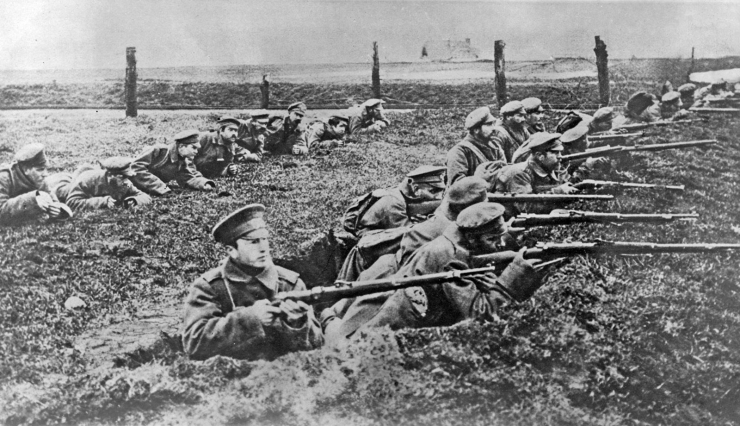23.8. 1914 Battle of Tannenberg
Categories: First World War , Calendar

For the Russians, the Battle of Tannenberg was a huge disaster. The Russian 2nd Army lost 125,000 men, while the German losses were "only" 15,000. When Samsonov realized his defeat, he committed suicide.
Before the recall of Prussian General Maximilian von Prittwitz, the commanding officer of the German Main 8. army, Hoffman believed that the Russian advance gave the Germans a good chance of victory. He believed that the great distance separating the Russian armies gave a courageous commanderthe opportunity to defeat both of these groups before they even had a chance to combine. But this plan involved great risk, for it was necessary to split the German forces in East Prussia and leave Rennenkampf's weak reassurance units in his path. If Rennenkampf had succeeded in discovering this plan, the lives of all German soldiers in East Prussia would have been lost.
Although it was Hoffmann who devised the plan that brought victory to Germany on the Eastern Front, its execution ultimately fell to Hindenburg and Ludendorff - and they too reaped the fruits of that victory. The plan was based on a relatively new tactic of using rail sidings to move German forces from north to south in a flash. This moved three German army corps south and awaited the arrival of the unsuspecting 2nd Army under Samsonov.
"One corps pinned him down and lured his army into battle, while two other corps struck at the Russian forces on the flanks and encircled them. The movement of the German forces began on 23 August and was carried out entirely in secret. For if Samosonov had had the slightest inkling of this plan, he would not have been lured into the trap. And if Rennenkampf had seen through the ruse, it would have been even worse. He was opposed only by covering cavalry units until the final victory in the south," writes Andy Wiest in A Pictorial History of the First World War.
Samsonov partially noted the concentration of German forces on his section of the front and informed Zhilinsky that a major battle was on the horizon. He was sure it was nothing he could not handle, so on 26 August, when the German troops began their encirclement, he committed to advance. Samosonov at first believed that the main German troops were on his right flank, and he therefore ordered the attack to be led in that direction. Although the Russian attack was initially successful, Samosonov suddenly discovered that the Germans had attacked his center and left flank. Samsonov discovered the full extent of the German attack and realised the impending disaster, which Zhilinsky also realised. The entire 2nd Russian Army was threatened with destruction.
Rennenkampf was instructed to attack from the south. "Whether it was due to over-caution or hatred of Samson, Rennenkampf advanced very slowly westwards, leaving the 2nd. Wiest writes.
In addition, the Battle of Tannenberg raged to the west. Thus, on 28 August, the situation for the Russians became critical as both flanks began to give way. Samosonov drove through the entire front line to raise the fighting morale of his men, hoping that salvation might come from a Russian advance in its midst. But the despair and desperation he saw on his reconnaissance convinced him that the battle was lost and his army must withdraw if it was to survive.
But his decision came too late. On 29 August, the German encirclement of the Russian 2nd Army closed and the Battle of Tanneberg was over. For the Russians, Tannenberg was a huge disaster. The Russian 2nd Army lost 125,000 men, while the German losses were "only" 15,000. When Samsonov realized his defeat, he committed suicide.
Sources:
Andy Wiest, Pictorial History of World War I
www.britannica.com
The article is included in categories: